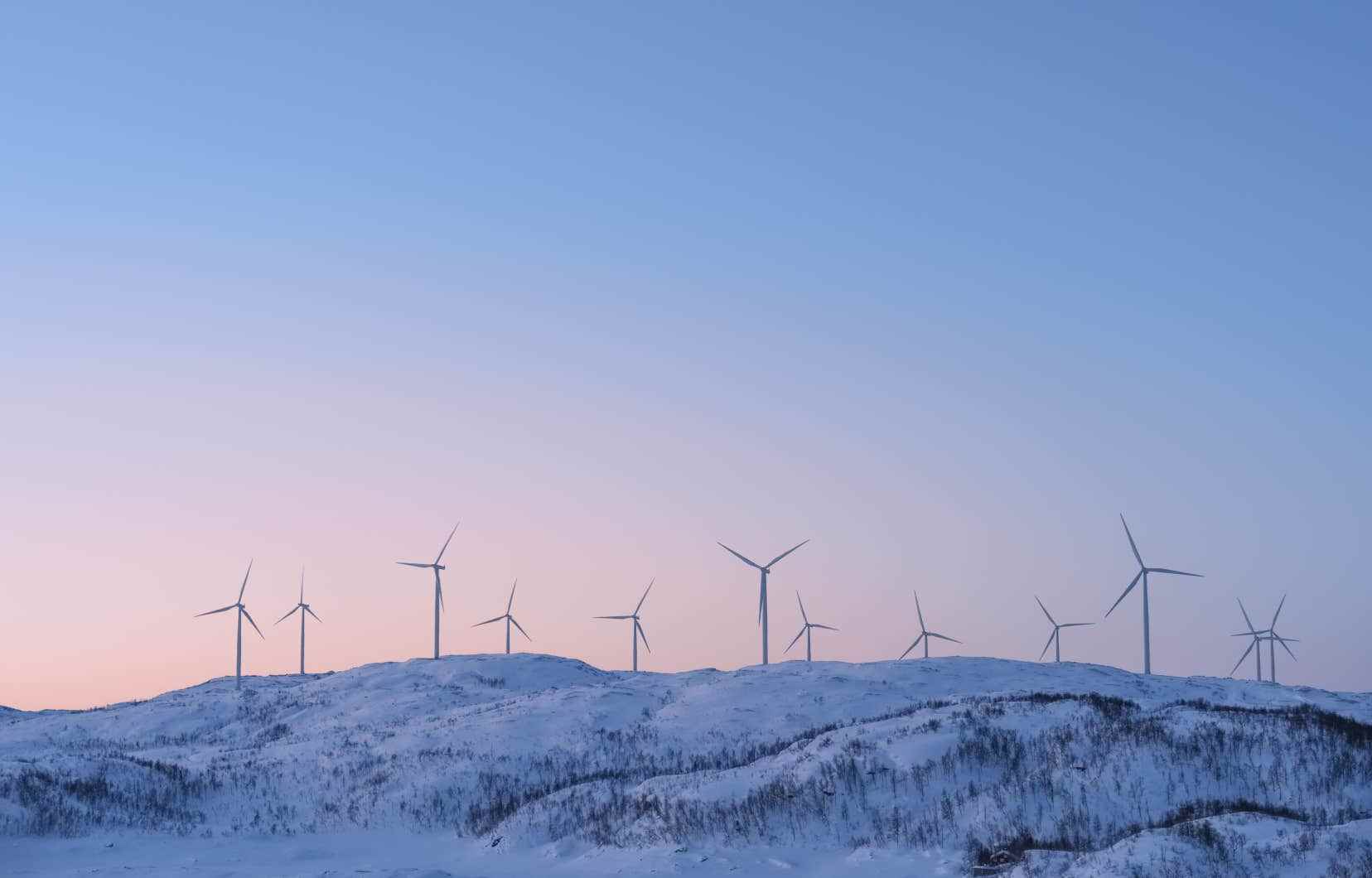The wind power rush has well and truly begun in Quebec. Currently, environmental authorities are evaluating no less than nine wind farm projects, which could produce up to 3,200 megawatts (MW) of electricity at peak capacity. But beware, say experts, they are not a panacea.
In the four corners of Quebec, they are springing up like mushrooms, with their white masts and their colossal blades visible for miles around; fashion is wind turbine.
Last year, eight wind farm projects received the green light from the Quebec Ministry of the Environment to build. None were denied their permit.
It is probably not in 2023 that the craze for this industry will stop. Hydro-Québec intends to launch calls for tenders at the beginning of the year to fill no less than 4,000 MW of wind power. This is more than two thirds of the installed capacity of the LG-2 hydroelectric complex — 5600 MW. That’s nearly three times the massive Manic-5 dam.
As for the nine wind farm projects awaiting permits from the Ministry of the Environment and the Fight against Climate Change, they represent a maximum total of nearly 600 turbines, or 30% of the total currently operated and under contract with Hydro in Quebec.
Promoters sniffed out the opportunity.
“Quebec had a wave where it paid dearly for its wind kilowatts, but there, wind prices continued to drop,” says the president and CEO of the energy development company Innergex renewable energy, Michel Letellier. This year the cost of wind power could be “around 6¢” per kilowatt, he predicts, after peaking in the region of 10¢ per kilowatt in recent years.
Boralex is also active in contributing to Québec’s wind energy production. Its “Des Neiges” projects in Charlevoix, “Apuiat” on the Côte-Nord, and “Bas-Saint-Laurent” could ultimately produce nearly 2,000 MW.
“Faced with climate change, the new demand from industries, which want to green their production, and obviously, with the current government’s approach, which also wants to use it as an engine of economic development, it seems obvious to me that our needs for the future are important,” said the company’s senior vice-president and general manager for North America, Hugues Girardin.
No more surpluses
“It also happened that we went from a period of surplus to a period where we need many more megawatts to meet our internal demand,” observes Michel Letellier.
This era of excess electricity that the businessman is talking about is far behind Quebecers. With foreign export contracts piling up and tough climate goals, Hydro-Québec has seen its reserves melt away like snow in the sun. In its 2022-2026 strategic plan, the Crown corporation indicates that in the future, “priorities will not be […] more to sell large quantities of energy, but rather to help Quebec to consume better”.
To meet Quebec’s carbon neutrality targets, Hydro estimates it needs to add 100 terawatt hours (TWh) of energy — half of its current capacity — to its energy portfolio. In December, the Minister of Economy, Innovation and Energy, Pierre Fitzgibbon, even mentioned a figure of 150 TWh by 2050.
The promoters of the environment say they are ready to enter the scene. “In the context, yes, we’re talking about wind power, because it’s becoming quite clearly the cheapest way to produce energy right now. And the fastest to install”, notes Michel Letellier.
Development at any cost?
Holder of the Chair of Energy Sector Management and professor at HEC Montreal, Pierre-Olivier Pineau agrees that “things are lining up very well for wind energy”, but he raises a yellow flag. In his eyes, the logic of development that Quebec is embarking on is a slippery path. Achieving Québec’s environmental objectives also depends on better energy efficiency practices.
“If we don’t do energy efficiency, there will be so much wind power that there will be a backlash: the industry will get bad press because there will be opposition. There, we can find ourselves in a situation where we will have difficulty increasing production capacity, “says the one who participates in the work of the Advisory Committee on Climate Change of the Government of Quebec.
Energy efficiency initiatives do exist at Hydro. The state corporation has set itself the goal of cutting 8.2 terawatt hours from Quebec consumption by 2029. [Mais] we could get at least 24 terawatt hours. Me, I think more. […] I’m not saying it’s easy to reach it, but we could reach it if we put our mind to it. We roll up our sleeves, we set requirements and we don’t just dangle subsidies, we tell them: ‘If you don’t do certain things that we know we should do, you will suffer the consequences’” , he said.
“We are entering into a discussion on the type of economic and social development that we want in Quebec, adds the director of government relations at the Équiterre organization, Marc-André Viau. Do we want to recreate the problems of overexploitation of resources that we have always known in our mode of development? »
Premier François Legault and his minister Fitzgibbon are not hiding their game. According to them, Quebec must quickly add electricity resources, first to fight climate change, but also to attract foreign investors. And while waiting for the big dams mentioned in the electoral campaign, wind power is turning heads.
